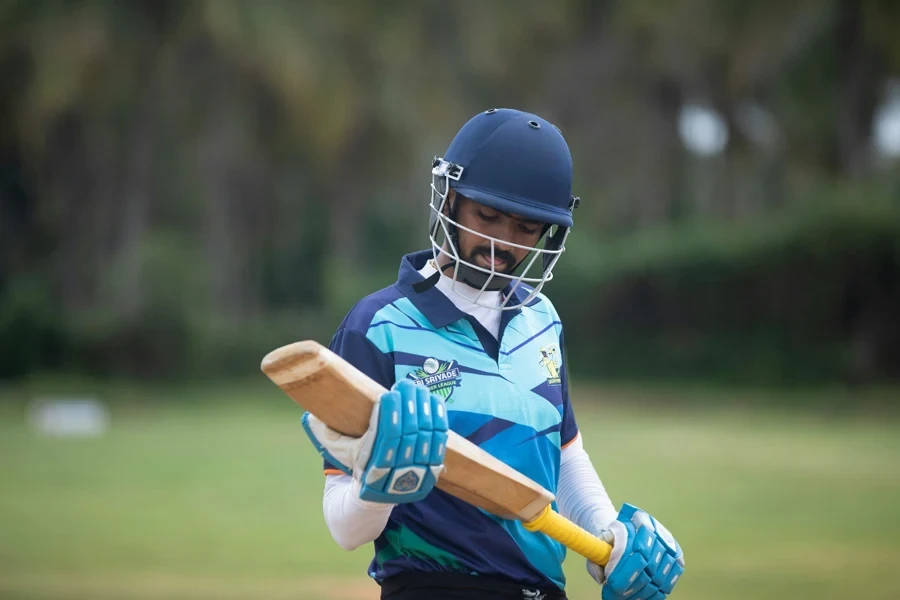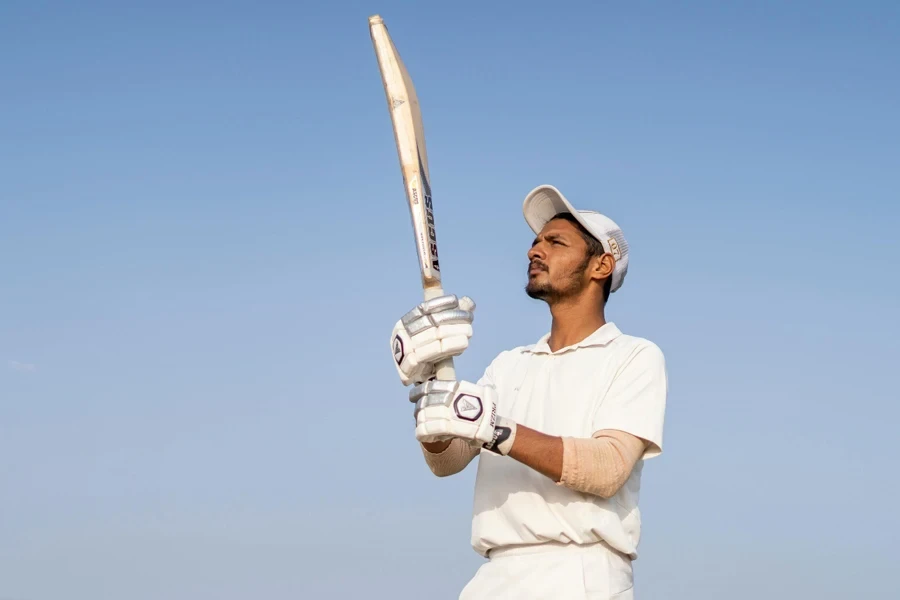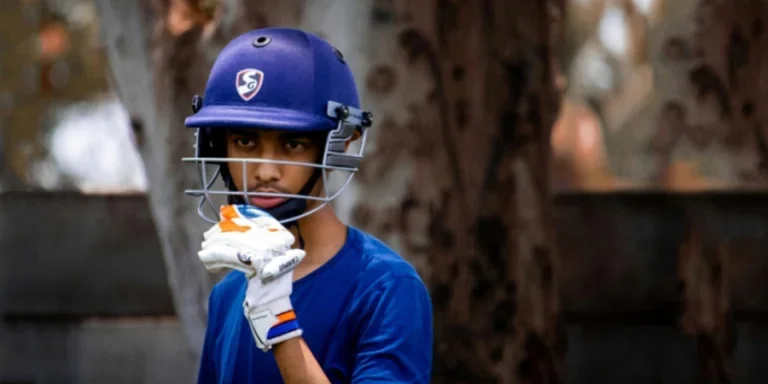Cricket gloves are more than just protective gear; they are integral to enhancing performance and ensuring safety in the fast-paced game. Understanding market trends and product features is crucial for professional buyers aiming to meet the demands of athletes and enthusiasts. This article provides a comprehensive guide to navigating the cricket gloves market, decoding product types, and making informed purchasing decisions.
Table of Contents
● A thriving market: The evolution of cricket gloves
● Decoding the types: Features and advantages
● Buyer’s checklist: Key factors for selecting cricket gloves
● Conclusion
A thriving market: The evolution of cricket gloves

Market scale and growth projections
The global cricket gloves market was valued at approximately USD 62.33 billion in 2023 and is projected to reach USD 82.52 billion by 2032, growing at a CAGR of 3.20% during the forecast period, according to Expert Market Research. This growth is driven by increased participation in cricket worldwide and the rising prominence of women’s cricket, leading to higher demand for quality equipment.
Regional highlights
The Allied Market Research highlights the dominance of the Asia-Pacific region in the cricket equipment market, with countries like India, Australia, Pakistan, and Sri Lanka exhibiting a large and dedicated fan base. The popularity of leagues such as the Indian Premier League (IPL) has further amplified demand for cricket gloves and related gear in these regions.
Trends shaping the industry
Innovations in glove design, including the development of hybrid gloves that combine features for enhanced performance and protection, are gaining traction. Additionally, the expansion of e-commerce platforms has made it easier for consumers to access a wide range of cricket gloves, contributing to market growth. The increasing focus on player safety and comfort continues to drive advancements in glove materials and construction.
Decoding the types: Features and advantages
Batting gloves: Comparing traditional and modern designs

Batting gloves come in two primary design types: traditional and modern. Traditional gloves feature single-piece finger padding, providing comprehensive protection but often at the cost of flexibility and added weight. These gloves are typically filled with cotton, making them more suitable for players seeking maximum durability over mobility. Modern gloves, on the other hand, incorporate multi-piece padding that enhances flexibility without compromising safety. This design often includes perforated panels for improved airflow, which reduces sweat accumulation and ensures player comfort during extended play.
Key materials used in batting gloves
Palm materials
High-quality leather palms are common in premium gloves, offering a combination of superior grip, durability, and moisture resistance. For players requiring budget-friendly options, synthetic materials like PU leather provide decent grip and durability at a lower cost. Advanced gloves integrate textured leather on the palm areas that experience maximum friction for improved bat control.
Padding materials
The core padding often includes high-density polyurethane foam or multi-layered foam, which enhances shock absorption and minimizes impact vibrations. Some gloves feature reinforced finger guards, made of thermoplastic polyurethane (TPU), for additional protection against ball strikes.
Split-finger and sausage-finger styles
Split-finger gloves are constructed with independent padding segments on each finger, allowing maximum flexibility for wrist-driven shots. These gloves are preferred by players who rely on intricate techniques, such as handling spin bowlers. Sausage-finger gloves have a single, continuous foam or cotton layer covering the fingers. This structure prioritizes protection and is ideal for players facing faster bowlers or playing on bouncy pitches.
Wicketkeeping gloves: Essential features and innovations
Palm and finger padding
Wicketkeeping gloves feature multi-layered impact-absorbing padding on the palm and fingers, designed to cushion the force of high-speed deliveries. Modern gloves often utilize a combination of memory foam and gel inserts, offering advanced impact resistance while maintaining lightweight properties.
Grip technologies
Gloves incorporate octopus-grip rubber patterns or raised pimple patterns on the catching area, ensuring secure ball handling even in wet conditions. For enhanced dexterity, ergonomic stitching allows natural hand movements, critical for quick catches and stumpings.
Finger caps and webbing
To protect fingertips, gloves include durable PVC caps or silicone reinforcements. The webbing between the thumb and index finger provides an extended catching surface while adhering to official cricket regulations for wicketkeeping equipment.
Inner gloves: Enhancing grip and durability

Materials
Inner gloves use breathable cotton for sweat absorption or leather for added comfort and moisture resistance. High-performance models incorporate padding in high-impact areas like the palm and fingers to reduce strain during extended play.
Design features
Modern inner gloves often include elasticated wristbands for a snug fit and reinforced stitching to prevent wear and tear. This added layer not only improves grip but also protects the outer gloves from sweat-induced deterioration, prolonging their lifespan.
Buyer’s checklist: Key factors for selecting cricket gloves
Fit and size

Choosing the correct size of cricket gloves is critical for performance and safety. Snug-fitting gloves improve bat control and ensure that padding remains in the proper position during impact. Sizing standards are generally based on the length of the hand from wrist to the tip of the middle finger. Gloves typically range from 16.5 cm for juniors to 22.5 cm for large adults. Properly sized gloves reduce discomfort and allow for seamless hand movements, a necessity for both batsmen and wicketkeepers. Oversized gloves can shift during play, increasing the risk of injury, while undersized gloves can restrict movement, leading to strain and reduced performance.
Material matters
The materials used in cricket gloves play a vital role in balancing comfort, durability, and protection. Leather palms, such as calf or sheep leather, are valued for their natural grip and sweat-wicking properties, which improve control and maintain comfort during prolonged use. Foam padding, particularly high-density polyurethane foam, is common in gloves designed for shock absorption and flexibility. Cotton fillings, often found in budget-friendly or traditional gloves, provide sufficient protection but are less durable and absorb moisture, reducing their effectiveness over time. Gloves with advanced materials like thermoplastic inserts offer enhanced finger protection against fast-paced deliveries.
Playstyle and protection
A player’s choice of gloves often depends on their style of play and the conditions of the pitch. Sausage-finger gloves, with their continuous padding, provide maximum protection and are preferred on bouncier pitches or against faster bowlers. Split-finger gloves offer flexibility, making them ideal for players relying on wristy techniques, such as those often employed on spin-friendly pitches. The type of padding, whether cotton for traditional gloves or foam for modern designs, should also align with the player’s need for mobility or safety.
Care and maintenance tips
Proper maintenance ensures the longevity and performance of cricket gloves. After use, gloves should be aired and dried in a warm environment to prevent leather stiffening and the growth of mold. Inner gloves can help absorb sweat during play, reducing the impact of moisture on the outer gloves. For cleaning, a soft brush or dry cloth should be used to remove dirt, avoiding water or oil-based cleaners that could damage the material. Storage in a ventilated kit bag prevents odors and extends the life of the gloves by preserving their structural integrity. Regularly rotating between multiple pairs can also reduce wear and tear, especially for players involved in frequent matches.
Conclusion

Cricket gloves are indispensable for ensuring player safety and enhancing on-field performance. With advancements in materials and designs, selecting the right gloves tailored to specific needs is essential for maximizing protection and comfort. Making informed choices based on fit, playstyle, and maintenance will ensure durability and improved gameplay, meeting the demands of both professional athletes and the cricketing industry.




